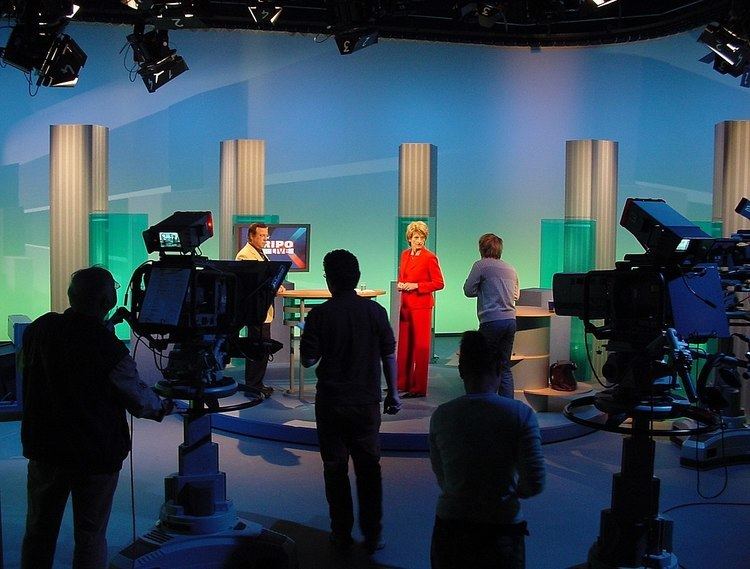 | ||
A television studio is an installation in which video productions take place, either for the recording of live television to video tape, or for the acquisition of raw footage for post-production. The design of a studio is similar to, and derived from, movie studios, with a few amendments for the special requirements of television production. A professional television studio generally has several rooms, which are kept separate for noise and practicality reasons. These rooms are connected via intercom, and personnel will be divided among these workplaces.
Contents
Studio floor
The studio floor is the actual stage on which the actions that will be recorded and viewed take place. A studio floor has the following characteristics and installations:
While a production is in progress, people composing a television crew work on the studio floor.
Production-control room
The studio control room (SCR) is the place in a television studio in which the composition of the outgoing program takes place. (An SCR is also often the acronym for the Satellite Control Room; from here TV feeds are sent to and received from the local satellite used by the TV station.) The production control room is occasionally also called a studio control room (SCR) or a "gallery" – the latter name comes from the original placement of the director on an ornately carved bridge spanning the BBC's first studio at Alexandra Palace, which was once referred to as like a minstrels' gallery. Master control is the technical hub of a broadcast operation common among most over-the-air television stations and television networks. Master control is distinct from a PCR in television studios where the activities such as switching from camera to camera are coordinated. A transmission control room (TCR) is usually smaller in size and is a scaled-down version of centralcasting.
Master control room
The master control room (MCR) houses equipment that is too noisy or runs too hot for the production control room (PCR). It also makes sure that coax cable and other wire lengths and installation requirements keep within manageable lengths, since most high-quality wiring runs only between devices in this room. This can include the actual circuitry and connections between
The master control room in a US television station is the place where the on-air signal is controlled. It may include controls to playout television programs and television commercials, switch local or television network feeds, record satellite feeds and monitor the transmitter(s), or these items may be in an adjacent equipment rack room. The term "studio" usually refers to a place where a particular local program is originated. If the program is broadcast live, the signal goes from the PCR to MCR and then out to the transmitter.
Other facilities
A television studio usually has other rooms with no technical requirements beyond broadcast reference monitors and studio monitors for audio. Among them are:
